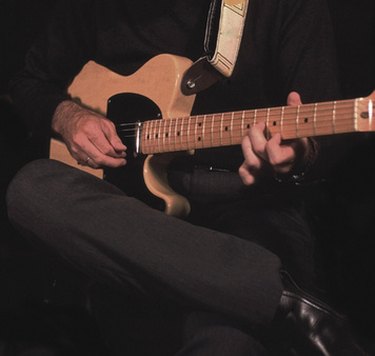
VSTs are virtual musical instruments on a computer. Steinberg Software introduced this technology in 1994. To play a VST instrument, you need a host program. Cubase, a digital audio workstation program, plays VSTs. The software comes with VSTs that mimic a variety of high-quality instruments. Steinberg and third-party vendors also market VST instruments that you can download. After installing a new VST file, Cubase may recognize it immediately. If your new VST does not appear in Cubase, you can add it manually.
Step 1
Click the Windows "Start" menu button. The menu will open and display a "Search" box at the bottom of the menu.
Video of the Day
Step 2
Type the following text in the "Search" box:
%PROGRAMFILES%\Steinberg\VSTPlugins
Step 3
Press "Enter." Windows Explorer will open and display the "VSTPlugins" sub-folder located in the "Steinberg" folder. This is where Cubase keeps VST instrument and plug-in files. Re-size this Windows Explorer window so it covers half the screen.
Step 4
Return to the "Start" menu "Search" box and type the following in the box:
%PROGRAMFILES%
This command will open another version of Windows Explorer and display the contents of your "Program Files" folder. Resize that window so it covers the other half of the screen.
Step 5
Look for a sub-folder in the "Program Files" folder that contains the VST instrument you want to add to Cubase. When you installed the VST instrument, the installation program told you the name of the installation folder. If you forgot that name, look for a folder with a name similar to the name of the VST instrument. For example, if you installed a VST named "Sonic Drums," look for a folder named "Sonic Drums." If you still cannot find the VST folder that you installed, consult the documentation that came with the VST instrument to determine the name of the installation folder.
Step 6
Double-click the folder containing your VST instrument file. Windows Explorer will display the folder's contents. Locate a file with an extension of ".dll." This is the VST instrument file.
Step 7
Click that file, hold down your left mouse button and drag the file from that Windows Explorer window to the "VSTPlugins" folder in the other Windows Explorer window. Cubase will find this new instrument automatically the next time you launch the application.
Video of the Day